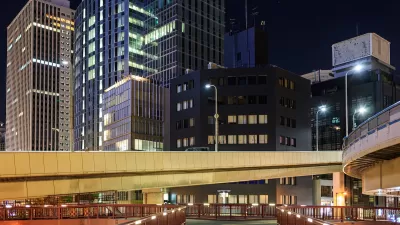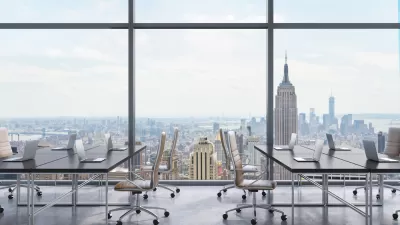The adaptive reuse of non-residential buildings has soared in recent years as demand for office space drops and the housing shortage deepens.

With demand for office space remaining low, office-to-apartment conversions continue to lead the adaptive reuse trend at 28 percent of projects, writes Mary Salmonsen in Smart Cities Dive. Hotels are the second largest source of residential conversions at 22 percent.
“Apartment conversions have risen 25% in the two years since the start of the COVID-19 pandemic, with 28,000 new units on the market converted from other property types, according to a report from RentCafe.” Of these, more than 11,000 units are in former office spaces, a growth of 40 percent between 2020 and 2021. According to the RentCafe report, “Larger office buildings in abandoned central business districts are better suited to conversion than the often-smaller office complexes distributed around the suburbs.”
Washington, D.C. leads the trend with 5.6 percent of the nation’s total adaptive reuse projects. “Philadelphia gained 1,552 converted units during this period, while Chicago converted older buildings into 1,139 new apartments.” This year, “Los Angeles is leading the nation in adaptive reuse construction for the first half of 2022 with 1,242 new deliveries — already the best year for adaptive reuse in the city’s history — and another 4,130 units in the construction pipeline.”
FULL STORY: Office-to-apartment conversions surge

Alabama: Trump Terminates Settlements for Black Communities Harmed By Raw Sewage
Trump deemed the landmark civil rights agreement “illegal DEI and environmental justice policy.”

Study: Maui’s Plan to Convert Vacation Rentals to Long-Term Housing Could Cause Nearly $1 Billion Economic Loss
The plan would reduce visitor accommodation by 25% resulting in 1,900 jobs lost.

Planetizen Federal Action Tracker
A weekly monitor of how Trump’s orders and actions are impacting planners and planning in America.

Wind Energy on the Rise Despite Federal Policy Reversal
The Trump administration is revoking federal support for renewable energy, but demand for new projects continues unabated.

Passengers Flock to Caltrain After Electrification
The new electric trains are running faster and more reliably, leading to strong ridership growth on the Bay Area rail system.

Texas Churches Rally Behind ‘Yes in God’s Back Yard’ Legislation
Religious leaders want the state to reduce zoning regulations to streamline leasing church-owned land to housing developers.
Urban Design for Planners 1: Software Tools
This six-course series explores essential urban design concepts using open source software and equips planners with the tools they need to participate fully in the urban design process.
Planning for Universal Design
Learn the tools for implementing Universal Design in planning regulations.
Caltrans
Smith Gee Studio
Institute for Housing and Urban Development Studies (IHS)
City of Grandview
Harvard GSD Executive Education
Toledo-Lucas County Plan Commissions
Salt Lake City
NYU Wagner Graduate School of Public Service





























